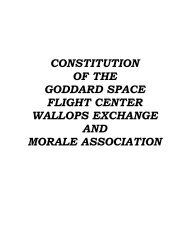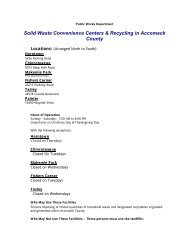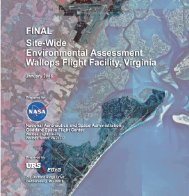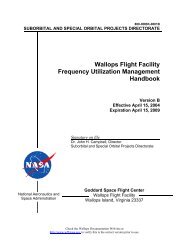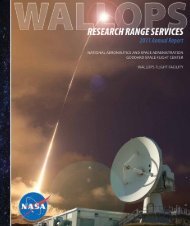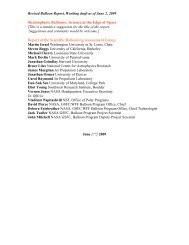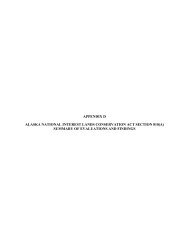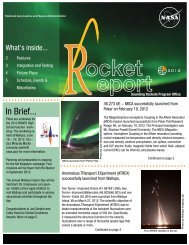Phil Eberspeaker - Wallops Flight Facility - NASA
Phil Eberspeaker - Wallops Flight Facility - NASA
Phil Eberspeaker - Wallops Flight Facility - NASA
Create successful ePaper yourself
Turn your PDF publications into a flip-book with our unique Google optimized e-Paper software.
Mesospheric Aerosol Sampling Spectrometer (MASS)<br />
Mission(s): 41.069 & 41.070 UE<br />
Discipline: Geospace Sciences<br />
Principal Investigator: Dr. Scott Robertson<br />
Institution: University of Colorado/CISP<br />
18 Sounding Rockets Annual Report 2007<br />
The frequency, brightness and spatial coverage of noctilucent clouds<br />
(NLCs) are of increased interest since they were suggested as a “miner’s<br />
canary” for global change. NLC formation involves the presence of<br />
water vapor, nucleation sites and cold temperatures.<br />
Questions remain about the size distribution of precursor<br />
particles, their coupling to electrons and ions, and their<br />
relationships to Polar Mesospheric Summer Echoes<br />
(PMSEs) and anomalously large electric fields.<br />
Launched in 2007, the AIM (Aeronomy of Ice in the<br />
Mesosphere) satellite was designed to observe and<br />
measure the formation and variability of noctilucent<br />
clouds by remote sensing. To complement its<br />
measurements, two rockets were launched from Andoya,<br />
Norway, in the summer NLC season of 2007. The rockets<br />
were instrumented for in situ observations of charged<br />
MASS payload prepared for spin/deployment<br />
and neutral aerosol particles and electric fields. The MASS launches were<br />
MASS payload rendering<br />
coordinated with the German-Norwegian ECOMA (Existence and Charge<br />
State of Meteoric Smoke Particles in the Middle Atmosphere) rockets,<br />
which had similar science objectives.<br />
Noctilucent Clouds imaged by the AIM satellite.



